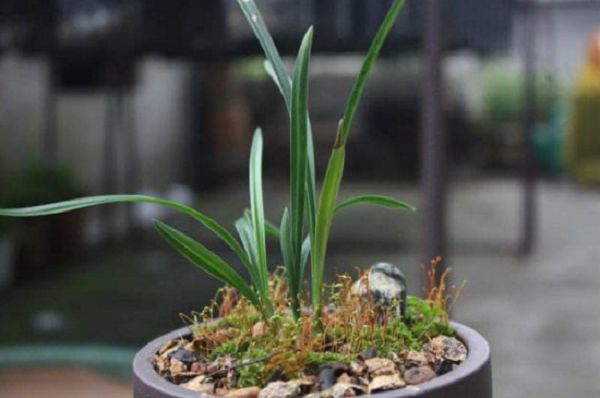The orchid turns the pot three steps, the novice must see, the veteran reviews

Friends who like orchids should know that orchids are perennial herbs whose growth rate is relatively slow. Like other plants, the growth of orchids also needs a relatively stable environment, that is to say, the plant material in the basin and the surrounding environment need to be relatively stable, which is not suitable for turning the basin and changing soil frequently.
Under a relatively stable condition for orchids, orchids can grow well for many years in a row, and will be better than a year. Orchid friends who usually pay attention to observation should also find that the growth of the grass in the first year is not good, and the growth in the second year will be obviously better than before, and the new buds will be stronger than in the first year, that is to say, after a long time, the orchid has begun to adapt to the environment you provide it. And when it is just beginning to adapt to this environment, you have to replace it, so repeatedly, your grass will only grow weaker and weaker.
The purpose of turning the pot is to separate seedlings or replace new plants to make the orchid grow better, but turning the pot too often will be counterproductive. Especially now we mostly use granular plant material, after turning the basin, the bonding degree between Langen and plant material will be greatly reduced, thus greatly affecting the growth of root system and the absorption of nutrients. Therefore, unless there is something wrong with the potted orchid, it is rarely turned over to change the soil within 2 years.
As for plant materials, I think orchid cultivation is actually a process of nourishment. Orchid friends who have raised fish know that raising fish first raises water, and that is the truth. When the plant material is well raised, the grass will grow better and better. In the case of proper management, as long as the newly grown seedlings do not show significantly weaker than the previous generation, it shows that the plant material is basically feasible and can continue to be used. Many orchid friends will pour out the plant material and change it and throw it away just when the plant material is not yet ripe or just ripe. What a pity. People who are reluctant to throw away the replaced plant material will sometimes use the old plant material to plant some common grass. You may find that the common grass planted with the old plant material grows much better than the one you raise with the new plant material. The reason is that as long as we figure it out carefully, it is not difficult to figure out why.
For plant materials, as long as they have not been planted with diseased grass, they can be screened and reused. In particular, it should be no problem for mixed granular plants to be reused for ten or eight years without any change in their properties. Under the condition that the previously planted bluegrass has no adverse reaction, the old plant material should be added to the new plant material as much as possible to retain the blue flora already formed in the original plant material. Do not let the character and proportion of new and old plant materials change too much. Or, by planting, you can sum up whether the old plant material has any disadvantages, and it may be much better to adjust the proportion by adding some other plant material than to use it with a brand new plant material.
Related
- Is the orchid suitable for indoor use? Is it good for the body?
- How to prevent the empty root of orchids?
- What to do after the crab claw orchid is withered?
- Why are the leaves of orchids always yellow? Fertilizing and watering.
- Can the root of the gentleman orchid be saved if it is rotten?
- Diagnosis and treatment of cotton-blowing beetle insects in Cymbidium
- There is a way for a gentleman's orchid to rot.
- What is the most suitable temperature and humidity for the orchid?
- How to raise a gentleman's orchid? Cultivation techniques of Cymbidium
- How to prepare the nutritive soil for the cultivation of Cymbidium



